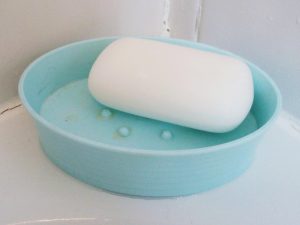Chapter 05: SIMPLE SOAP-NOTE SECTION EXAMPLES
SOME SIMPLE SOAP-SECTIONS
Let’s begin the process of creating our own SOAP notes by looking at some examples of some simple SOAP note entries. It will make a bit more sense if we look at each section (S, O, A, P) separately.
SIMPLE SOAP-SECTION EXAMPLES
The SUBJECTIVE
- The following are some simple examples of entries that could be found in the Subjective section of a note. While there may be several that could stand alone and be the only information for the Subjective section on a given day, most are just examples of simple statements.
-
Patient reports that he could hardly sleep last night; roommate’s coughing kept him awake.
-
Patient states she can now reach up into her cupboard and get her coffee cup down with her left UE.
-
Patient’s mother reports that her son has been laying on his stomach for 3 minutes 3x/day without discomfort.
-
Patient notes his R foot feels very numb this morning.
-
Patient offers no complaints; resting comfortably in wheelchair.
-
Patient reports decreased knee pain since last ultrasound treatment.
-
Patient reports anterior groin pain today, 5/10; increases with trunk flexion, abates with trunk extension.
-
Patient notes plantar surface of his R foot feels very numb this morning. He states ‘that numbness causes me to stumble about.’
- Patient reports that she is having decrease knee pain since the last ultrasound treatment and is now able to scale steps without manual assistance of another.
- Patient reports that anterior groin pain today, 5/10, is limiting his ability to sit for more than 10 minutes.
-
Patient reports that he could hardly sleep last night; roommate’s coughing kept him awake.
- Clinical Tangent:
As we go through the process of learning how to construct a note, you will soon see that quality of your note really relies on the quality of:
- The questions you ask your patient. What you ask your patent: before, during and after treatment dictates what you will enter into the note AND influences how you proceed or modify your treatments.
- Your Clinical Problem Solving Skills. The thought process you use to create your treatment will be revealed in your documentation
- Your Observation skills: before, during and after treatment. Your observations are crucial to interpreting how a patient is responding to your interventions and treatment activities. They are also crucial to determining if a patient’s words match their actions and/or body language. Do you remember where we enter our analysis and interpretation of a patient’s performance? Right you are: the Assessment.
DOC Ex 10: Time to play Sherlock Part I
Select three of the above entries and note what other information you might find helpful to know before you would see the patient. In other words, what other questions would you want to ask the patient to get a clearer picture of the situation.
For example:
If the patient offered that they feeling better today, I might ask ‘in what way?’ and then through some further questions, learn what they really mean: Is their pain reduced or has their energy increased or are they able to walk further, sleep longer, stand up quicker.
OBJECTIVE
The following are some simple examples of entries that could be found in the Objective section of a note. These are just provided for you to appreciate that they are “facts” rather than “analysis” or “statements-from-a-patient”. We will discuss how to construct an Objective section soon.
- US: 100%, 1.2w/cm2, R ant/lat shld x 6 mins; patient sitting.
- Therapeutic exercise per flowsheet with verbal and manual cues for correct completion of UE exercises.
- Gait training: 35ft x 2 with RW, min assist and verbal cues for technique.
- Transfers: Mod assist sit to / from stand. Supine <> sit, mod A
- Vital Signs: 02 sats 93 during ambulation; 95% at rest.
- Ball toss x 3 mins with CGA and manual cues to facilitate weight shift to the right.
- AROM: R knee 7-85 degrees post therapeutic exercise.
- HEP: Instructed patient in the use of a lumbar roll to use when sitting to aide in proper posture.
DOC Ex 11: Sherlock Part II
For example:
#6 above: The Ball Toss. I would want to know the position of the patient (seated, standing, standing on one leg, etc.) as well as the frequency of the tosses (2 – 3 tosses/minute or 20 – 30 tosses / minute). I might also want to know if the patient lost their balance (if so, in which direction) during the activity.
ASSESSMENT
The following are some simple examples of entries that could be found in the Assessment section of a note. We will be discussing the Assessment section of the note at length this semester. The following is to give you an idea what type of statements are included in an Assessment.
- Patient’s quads fatigue quickly with therapeutic exercise; still displaying quad avoidance during gait due to weakness.
- Patient’s increased right knee pain limiting the amount of standing exercises they tolerate.
- Patient displaying increase motion in all planes of shoulder AROM today, progressing toward ROM goal for shoulder.
- Patient has met STG # 2 of Ambulation: 50ft w/ RW CGA;
- Limited ankle DF makes heel strike very difficult for patient to obtain during gait training on level surface today.
- Patient making excellent gains in right knee AROM; increased right patella mobility also noted during patella mobs today.
- Patient needing frequent rest breaks due to SOB today; ambulation distance tolerated was 30 ft less than yesterday’s session.
DOC Ex 12: Quid deinde sequitur?
Quid deinde sequitur? ….what follows next?As we have said, the Assessment section offers our analysis and/or summary of a patient’s status/performance. …but so what? Well, it helps to explain our rationale for further treatment or adaptations to treatment or the request of new treatments etc. If we look at the statements above, they each present a form of analysis / summary. And they beg a follow-up statement to further explain the rationale for what is to follow.
For example:
With #4, if the patient has met a short term goal, they are ready to, or in the midst of, progressing towards their long term goal. So the ‘what follows next’ for #4 might be “progressing toward LTG #2.”
Let’s take a look at #5. What might be included in the next statement? Perhaps something to tie that issue with your plan to add specific DF ROM activities to HEP. Perhaps a statement related to the fact that decreased DF might increase the patient’s fall risk on uneven surfaces, thus you will continue to use a RW for gait training. Let’s see how you do:
For the last entries #6 and #7: What would you expect the next statement (s) to offer?
PLAN
If you fail to plan; you are planning to fail.
The following our just statements that could be found in the Plan section of a note.
-
Continue per PT POC.
-
Continue PT POC 3x/weekly.
-
Continue PT POC BID.
-
Continue per PT POC to restore shoulder ROM and increase functional mobility.
-
Continue per PT POC with increased focus on stair training next session.
-
Continue per PT POC progressing to standing exercises next session.
-
Continue PT POC; note, patient to see MD for follow up visit before next PT session.
DOC Ex 13: Test your knowledge
1. In the above examples, you see the word ‘continue’ in every note, but not DC PT? Why is that?
2. What is a PT POC? What does it include?
3. What does BID mean?
4. What does HS mean? (you will need to go back to your medical vocab text perhaps to find this one)





